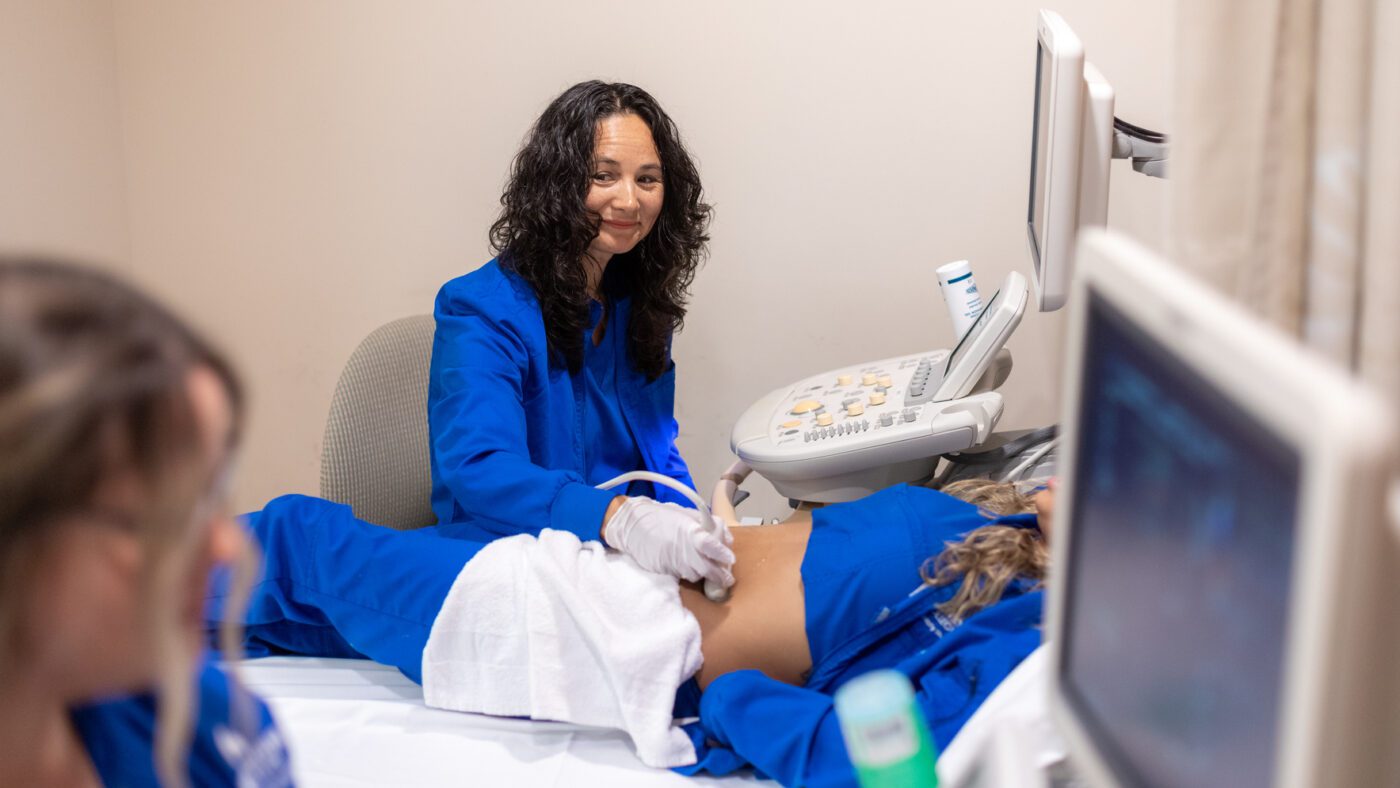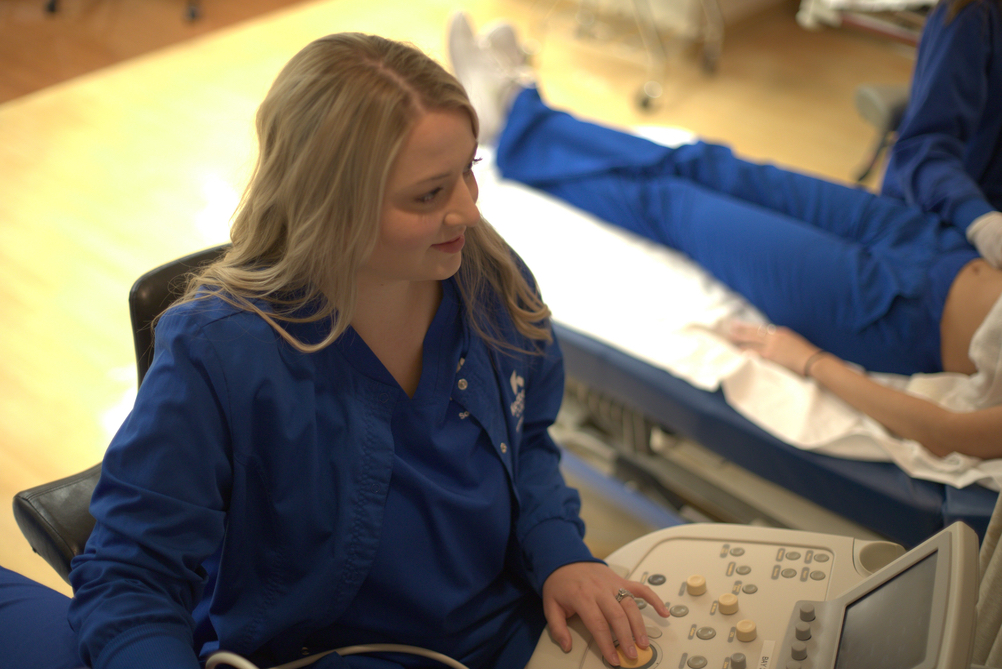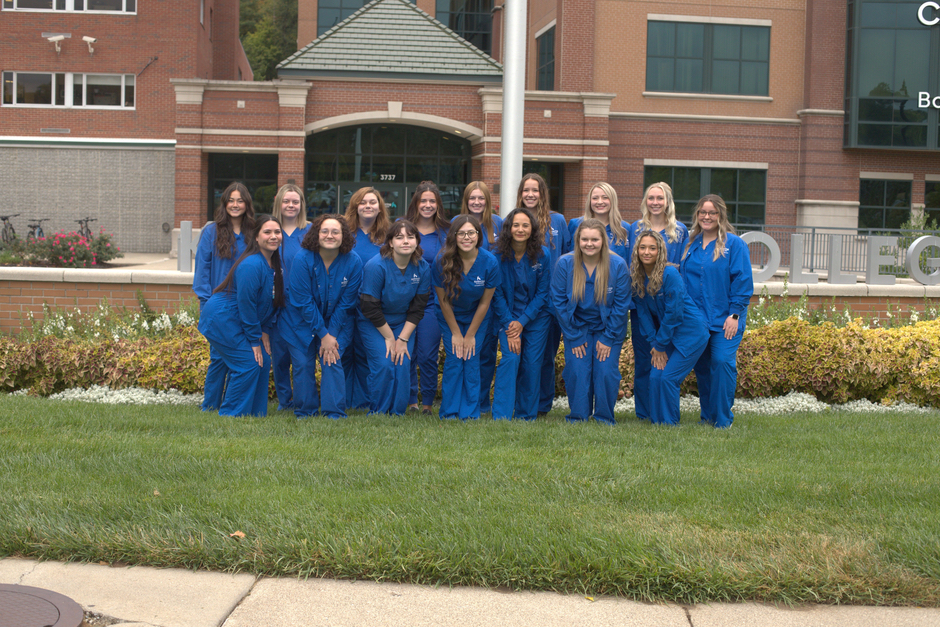Sonography Professors Explain Importance of Ultrasounds


October 2, 2024—October is Medical Ultrasound Awareness Month, created to increase awareness of diagnostic medical sonography and the vital role sonographers play in healthcare. To help us celebrate this important month, professors in Kettering College’s Sonography program shared their knowledge with us about sonography and the wide range of its uses to deliver quality patient care.
Diagnostic medical sonography uses sound waves (ultrasound) to produce 2D and 3D dynamic images inside the body. A common assumption is that ultrasound is only used to look at fetuses during pregnancy. Dr. Susan Price, program chair and professor, says conducting a fetal ultrasound, although very common, is “a very complex scan that determines the size and age of the fetus while determining whether the baby is healthy or not.” In addition to fetal ultrasound, Dr. Price says Kettering College Sonography students learn modalities in gynecology, cardiac, vascular, and abdominal structures.


Vascular sonography is an important tool in preventing strokes and life-threatening deep venous thrombosis along with a variety of other issues pertaining to arteries and veins, says Beth Maxwell, assistant professor. She says, “Cardiac sonography is all about the heart, and we try to prevent a patient from having an invasive procedure, like a cardiac catheterization, which carries a risk of death, or an expensive nuclear medicine test that some patients can’t qualify for because of an allergic reaction or kidney issues. There is no risk of death with an ultrasound, and no one is allergic to us!”
Rachel Moutoux, associate professor, adds that ultrasound is also used to scan musculoskeletal structures and adds the interesting fact that “Ultrasound was helpful during COVID-19 to scan patients’ lungs and recognize patterns that suggested they were carriers.” She says, “Ultrasound can also be used in special procedures like biopsies, cyst aspirations, thoracentesis, and paracentesis.”


Point of Care Ultrasound (POCUS) is a recent innovation in ultrasound technology. “POCUS teaches basic sonography skills to physicians and medical students performing limited ultrasounds,” says Shawnya Wilborne, assistant professor. She says, “POCUS focuses on answering binary questions to assist providers in determining the next level of care for their patients.” She explains that, based on POCUS findings, a complete ultrasound may be ordered for further evaluation by a registered sonographer.
Medical ultrasound is utilized in a variety of ways to detect and diagnose. The professors we spoke to agree it’s a gratifying profession that often brings answers and relief to patients. From telling a couple they’re having a healthy baby to discovering a hidden abscess, ultrasounds are the tools that bring answers into focus.
To achieve this, a sonographer needs to be highly trained and skilled. Professor Moutoux says, “Scanning is an art, and it takes hundreds or even thousands of hours to perfect it. Although the machine processes the sound waves and displays the image, the sonographer must know where and how to obtain the optimal image of a patient’s anatomy or pathology.” Professor Maxwell adds, “People think this is an easy profession, but it is not. We are not just taking pictures. That is a technician. Technologists know why they are performing a scan. And if we don’t capture it, the physician won’t know the problem is there.”


Interested in learning more about a career in sonography? Kettering College is a faith-based campus that offers a Bachelor of Science in Medical Sonography. Our most recent graduating class enjoyed a nearly 100% job placement rate. Learn more about Kettering College’s Sonography program.
Print This Page